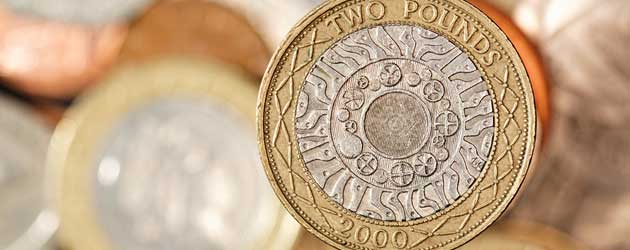
Due to a severe lack of UK economic data towards the end of the week the Pound has managed to claw back some of the losses that it suffered against the majority of its currency peers earlier on in the week. With no new negative economic data it seems that some market-players felt that Sterling had been pushed too low, too quickly, and looked to remedy this by purchasing the Pound at these reduced rates.
Sterling took a tumble on Tuesday as some soft UK trade data and a weak Industrial Production print signalled to investors that the British economy may be in need of some additional stimulus, something that the Bank of England had hinted was necessary in an unexpected policy statement five days earlier. As traders upped their quantitative easing bets the Pound fell to a near-4-month low against the Euro, a 3-year low against the US Dollar and a monthly low against the Canadian Dollar, the Australian Dollar and the New Zealand Dollar.
However, combinations of profit taking stances and exogenous circumstances have since conspired to send Sterling higher versus the majors.
The largest single event that has rocked markets this week was the Federal Reserve’s admission that asset purchase tapering may be put on hold. Fed Chairman Ben Bernanke said that the current rate of inflation – too low – and the current Unemployment Rate – too high – did not warrant an end to highly accommodative monetary policy. The dovish remarks shattered demand for the US Dollar, sending GBP/USD higher from 1.4860 to 1.5177, as traders priced-in the possibility of prolonged Fed stimulus.
The Pound rose by around 0.6 cents against the Euro yesterday, settling just below 1.6000, as political issues in Portugal and Italy frayed investors’ confidence whilst Greek Unemployment soared out of control and the European Central Bank announced that it was considering lowering interest rates even further below the current record low of 0.50%.
Sterling ended the day at 1.5750, almost identical to where it began, against the Canadian Dollar as European worries hurt sentiment towards the risk-correlated commodity currency but surging crude oil prices kept the ‘Loonie’ afloat.
The Pound rallied by a whopping 2.6 cents against the New Zealand Dollar to 1.9370 as the highly volatile Antipodean currency was negatively impacted by news from Japan that the BoJ is satisfied with the current rate of economic growth, in relation to its aggressive stimulus measures, and therefore is not considering adding to its asset purchasing programme. The news hurt sentiment in the Asian-Pacific region.
Sterling also posted an impressive daily gain against the Australian Dollar, appreciating by 2.3 cents to 1.6585 as the Australian Unemployment Rate inched higher from 5.6% to 5.7%. The ‘Aussie’ was also damaged by the Bank of Japan’s comments regarding not making any additional asset purchases.
There is no UK economic data of note set to be released today so it is likely that the Pound will continue to trade with a neutral bias against the majors. However, Sterling sentiment still remains susceptible to comments or actions from the Bank of England with regards to its quantitative easing scheme; any further asset purchases or instances of forward guidance could seriously hamper demand for the Pound.

Comments are closed.